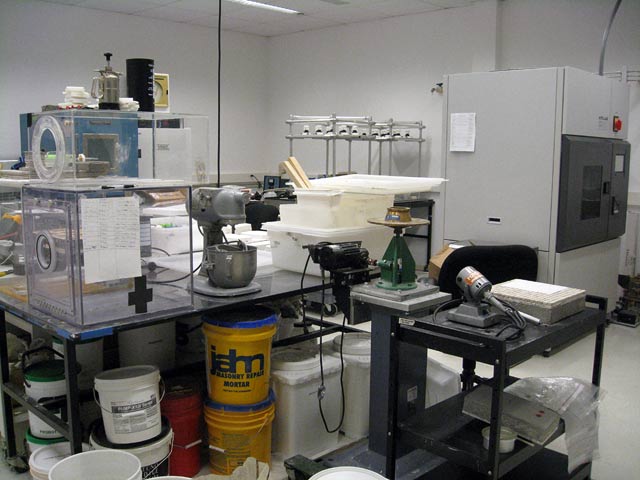For those of us over 21, the idea of premature aging is definitely not attractive. Every time I pass the Getty Conservation Institute’s Accelerated Aging Lab, I get somewhat apprehensive.
But the lab is not intent on hastening wrinkles and gray hair. Instead, it allows GCI scientists to study the effects of light, heat, and humidity on materials.
I was in the lab recently when they had some samples of window film rotating on racks in the Atlas C1500 Xenon Weather-Ometer. This piece of equipment simulates lighting conditions with lamps and filters. The pieces of window film were submitted by our friends over at the Los Angeles County Museum of Art (LACMA), who wanted to see how the film would hold up to the noonday sun over time.
The Weather-Ometer was simulating high noon, 24 hours a day, seven days a week, so scientists could study the film and see how the exposure was affecting the plastic. A lot faster than sticking it outside for years.

Inside the Accelerated Aging Lab: tools for studying rock and mortar. The machine that looks like an industrial Kitchenaid is, in fact, a Kitchenaid—it’s used for mixing lime putty and mortars.
The lab also contains Hotpacks (pictured below), humidity-controlled ovens that allow scientists to see how steady heat and humidity affect a material. And there are Thermatrons, which measure the effects of changing heat and humidity. With these tools, scientists can subject a material to varying temperatures to see how it reacts. The Thermatron was useful recently when scientists were measuring how humidity affects the passage of salt through stone, and how a rock responds when it’s frozen and then thawed each year for generations in climates colder than ours.

Hotpacks in the Accelerated Aging Lab. The unit on the right is a newer model.
These tests are helping GCI scientists study the damage wreaked on the world’s cultural heritage by the forces of nature and time. The tests are also giving them new information about how plastics, used extensively in postwar art, will deteriorate over the years. And they’re helping the folks at LACMA make sure their window film will stand the test of time.
Thanks to this visit, I no longer fear premature aging—in the lab, anyway.




Comments on this post are now closed.